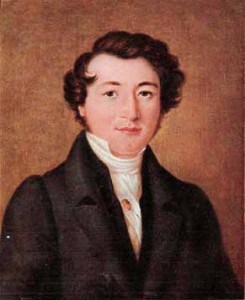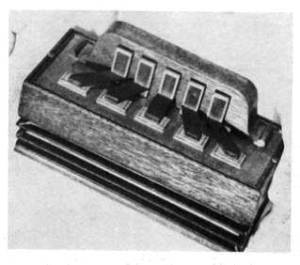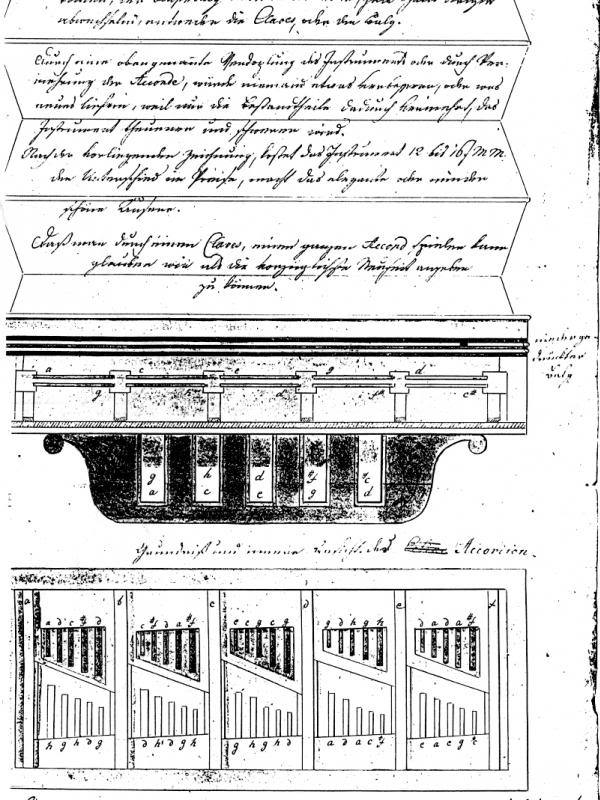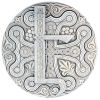Cyr ill Demian (1772–1849) of Armenian origin, made his living as an organ and piano maker, with his two sons Karl and Guido, in Mariahilfer Straße No. 43 in Vienna, Austria. On May 6, 1829, Cyrill and his two sons presented a new instrument to the authorities for patent - the accordion. The patent was officially granted on May 23, 1829.
ill Demian (1772–1849) of Armenian origin, made his living as an organ and piano maker, with his two sons Karl and Guido, in Mariahilfer Straße No. 43 in Vienna, Austria. On May 6, 1829, Cyrill and his two sons presented a new instrument to the authorities for patent - the accordion. The patent was officially granted on May 23, 1829.
 | On this date in 1829 Cyrill Demian (1772–1849) received an official patent from the Vienna patent office for a new instrument he called an accordion. Thus, he is generally credited with the invention. A few give credit to Christian Friedrich Ludwig Buschmann (who also claims to have invented the harmonica) but there is no evidence for either claim apart from a few jottings that Buschmann himself made. His claim to have invented the harmonica is clearly false because they were on sale in Austria 3 years before he says he invented the instrument. Demian is our man. |
 | Cyrill Demian was an Armenian from the Romanian city of Gherla (ancient Armenopolis) who moved to Vienna and worked as an organ and piano maker, with his two sons Karl and Guido, in Mariahilfer Straße No. 43 in Vienna. His new instrument was a modification of the Handäoline, comprising a small manual bellows and five keys. As noted in his own description and patent application, the instrument was what we now call a push-pull accordion, that is it produced a different note on each key depending on whether the bellows were pushed or pulled. Five keys would give a few notes more than an octave in a diatonic scale and major chords would be easy to produce. |

His description is translated here from the original German:
Its appearance essentially consists of a little box with feathers of metal plates and bellows fixed to it, in such a way that it can easily be carried, and therefore traveling visitors to the country will appreciate the instrument.
It is possible to perform marches, arias, melodies, even by an amateur of music with little practice, and to play the loveliest and most pleasant chords of 3, 4, 5 etc. voices after instruction.
1st – In a box 7 to 9 inches long, 3½ inches wide and 2 inches high, feathers of metal plates are fixed, which were known for more than 200 years as Regale, Zungen, Schnarrwerk, in organs.
2nd – With bellows fixed to the above box and its 5 claves fixed below, even an amateur of music can play the loveliest and most moving chords of 3, 4 and 5 voices with very little practice.
3rd – Each claves or key of this instrument allows two different chords to be heard, as many keys are fixed to it, double as many chords can be heard, pulling the bellows a key gives one chord, while pushing the bellows gives the same key a second chord.
4th – As this instrument can be made with 4, 5 and 6 or even more claves, with chords arranged in alphabetical order, many well known arias, melodies and marches, etc. may be performed similar to the harmony of 3, 4 and 5 voices, with satisfaction of all anticipations of delicacy and vastly amazing comfort in increasing and decreasing sound volume.
5th – The instrument is of the same size as the attached illustration, with 5 claves and 10 chords, not heavier than 32 to 36 Loth [1 Loth = approx. 16 gm], only if there are more chords will it become longer and some Loths heavier, so it is easy and comfortable to carry and should be a welcome invention for travelers, country and parties visiting individuals of both sexes, especially as it can be played without the help of anybody.[1]
With the cover of the bellows, the entire instrument may be doubled, in order to play more chords or more single tones, in this case, keyboard, the bellows remain in the middle, while each hand controls in turn, either the claves or the bellows.
The above-mentioned duplication of the instrument or adding more chords, would not make anything better to anybody, or give something new, as only the parts would increase, and the instrument more expensive and heavier. The instrument costs 12 to 16 Marks the difference in price results in a more elegant or worse-looking appearance.
From humble beginnings a welter of different kinds of accordions came forth. Many more right hand (treble) keys were added, as were left hand (bass) keys. More reeds (what are called “feathers” here) made richer sounds which could be added or subtracted via stops (equivalent of organ stops), and so forth.
In the 19th century the accordion eventually supplanted the fiddle as the staple instrument for dance music in northern Europe, because of the relative ease of playing in comparison with the fiddle. Accordion reeds are permanently tuned, so it is hard/impossible to play out of tune, and the arrangement of the keys makes production of major chords very simple. If it is tuned in C major, for example, the first 3 keys played together by pushing the bellows produce the notes C E G (the tonic major chord).
See also

